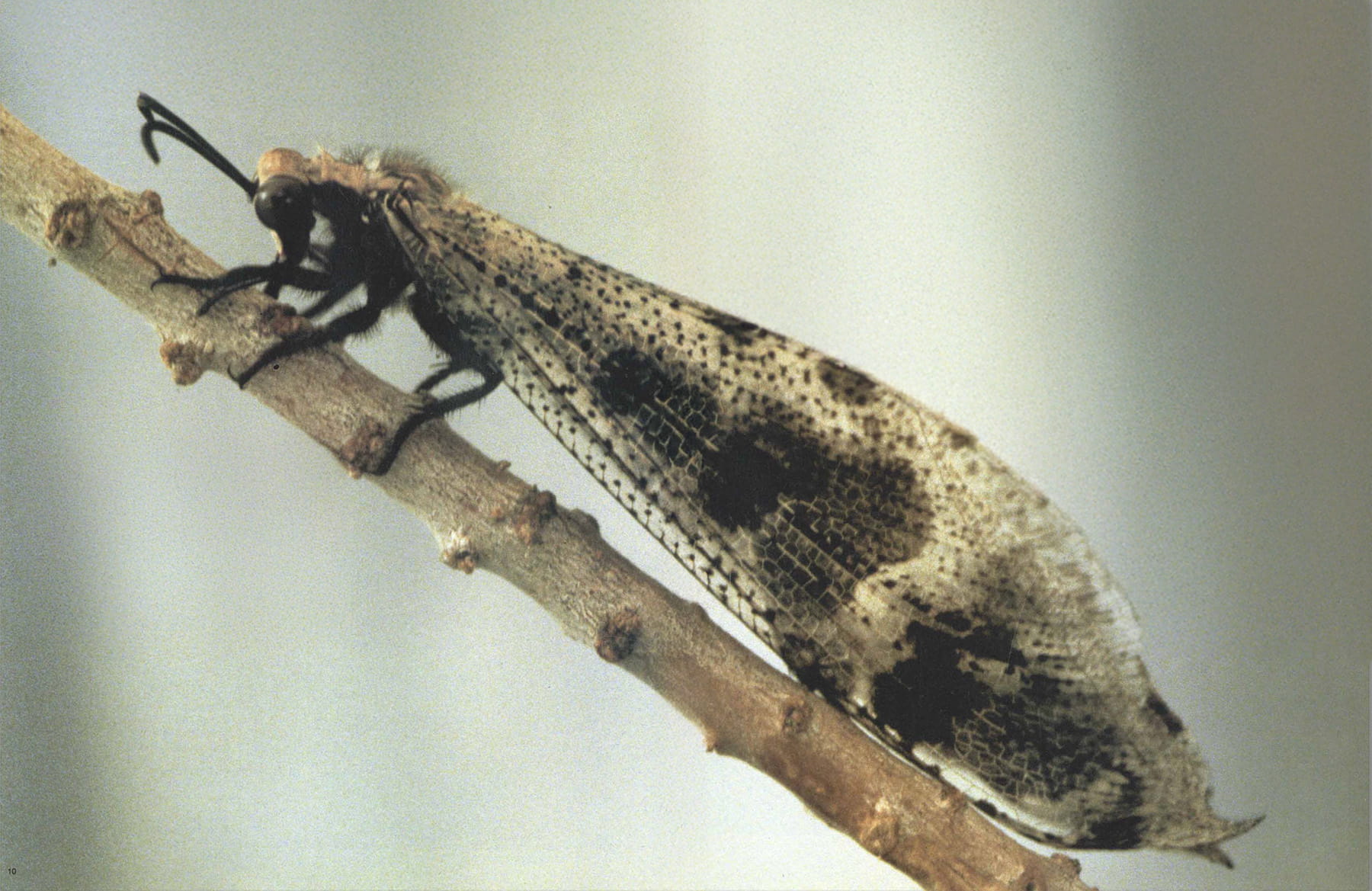
The Arabian Lion
Grown, they look like dragonflies, but at the larval stage the ant-lions — squat, tough, and as fierce as the real thing — not only feed on ants, but dig pits in which to trap them.
This article appeared on pages 10-11 of the January/February 1982 print edition of Saudi Aramco World.
The African lion, unfortunately, has been extinct in Arabia for the last 100 years, but there are still lions in Arabia. Admittedly they're tiny, but proportionately they are every bit as ferocious as the real thing—and a good deal smarter. They're called the ant-lions.
Known to scientists as Myrmeleontidae, in the order Neuroptera, the ant-lions are common throughout Arabia, but few people recognize them - and even fewer know of their unique life style.
Adult ant-lions resemble dragonflies, with four narrow, transparent wings. The largest are as large as the biggest dragonfly, while the smallest are no more than a few centimeters across the wings. Unlike dragonflies, however, they settle with the wings folded neatly along the back, except when alarmed; then they raise all four wings together. Closer investigation will show that the head has two prominent, clubbed antennae just like a butterfly's.
Adult ant-lions are often attracted to light and are regular visitors to the walls of a well-lit veranda. Though their flight is rather weak and fluttering, it suffices to bring males and females together so that they can mate; indeed, at the adult stage, the ant-lion seems to have no other purpose in life.
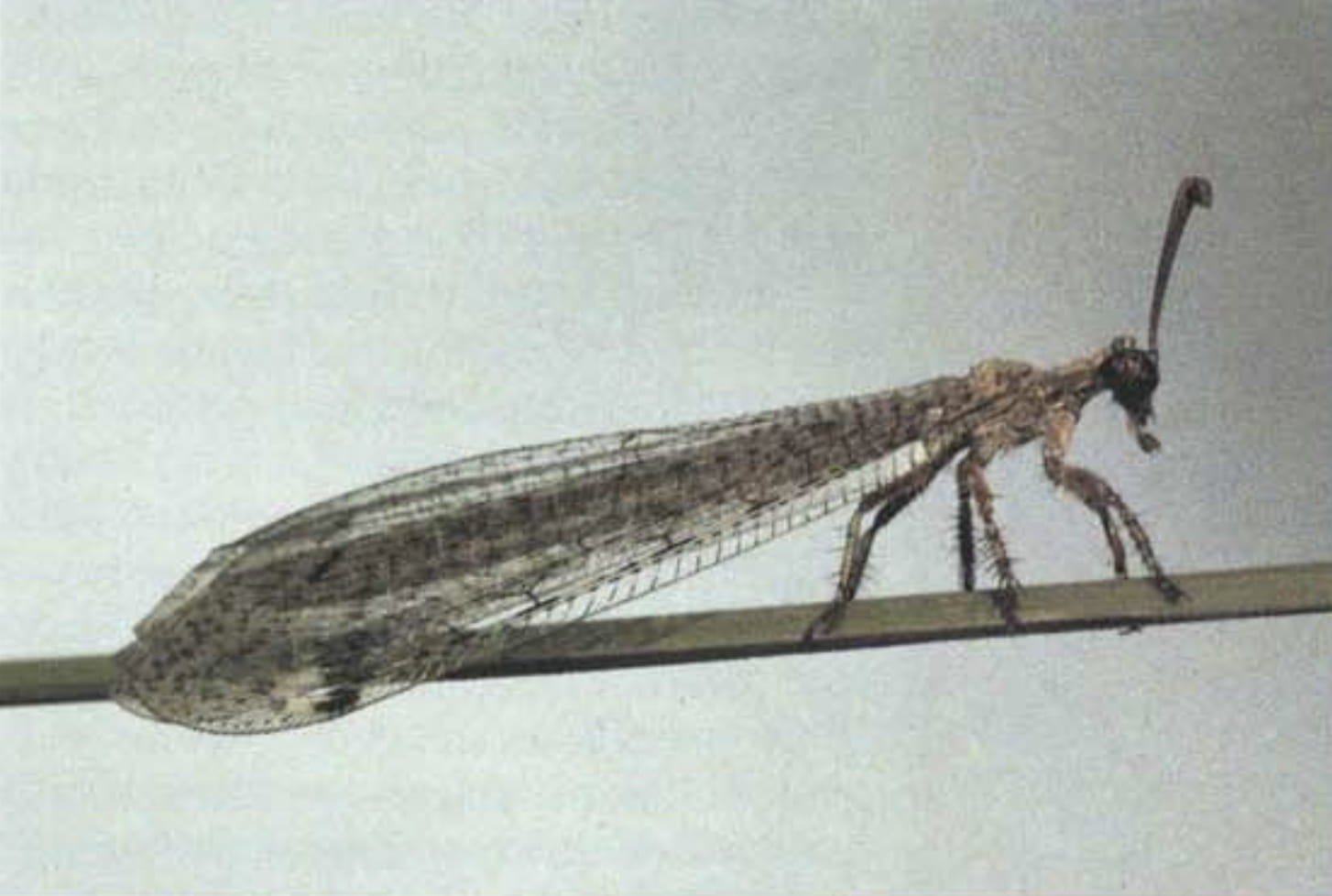
Adult ant-lion
But why are they called ant-lions? Because, as larvae, the ant-lions are ferocious predators which feed almost exclusively on ants. Squat little creatures, with short legs, tough bodies and heads which carry impressive fangs, the ant-lion larvae live in soft sand where they trap ants in steep pits. With quick, powerful flicks of their heads and fangs, the ant-lion larvae throw sand, and even small stones, quite a long way, until the sides of the pit are so steep that ants stumble into them and slide to the bottom - where the ant-lions wait to seize them with powerful fangs.
Should the ant look as if it might to escape, the ant-lion has an extra trick up its sleeve. With the same sharp flicks of the head used for digging its trap, the ant-lion throws sand at the ant - forcing it to the bottom of the pit, where, once it is killed and sucked dry, it is unceremoniously thrown out of the pit just as quickly. How many ants an ant-lion eats as a larva is uncertain, but I am sure the number runs into the hundreds.
Since ant-lions live—literally—"in the pits," it's easy to spot them—not least because they usually live in little colonies in soft sand or dust; thus they are usually found in places sheltered from rain or excessive wind. Chances are that somewhere around any house in Arabia there will be ant-lions.
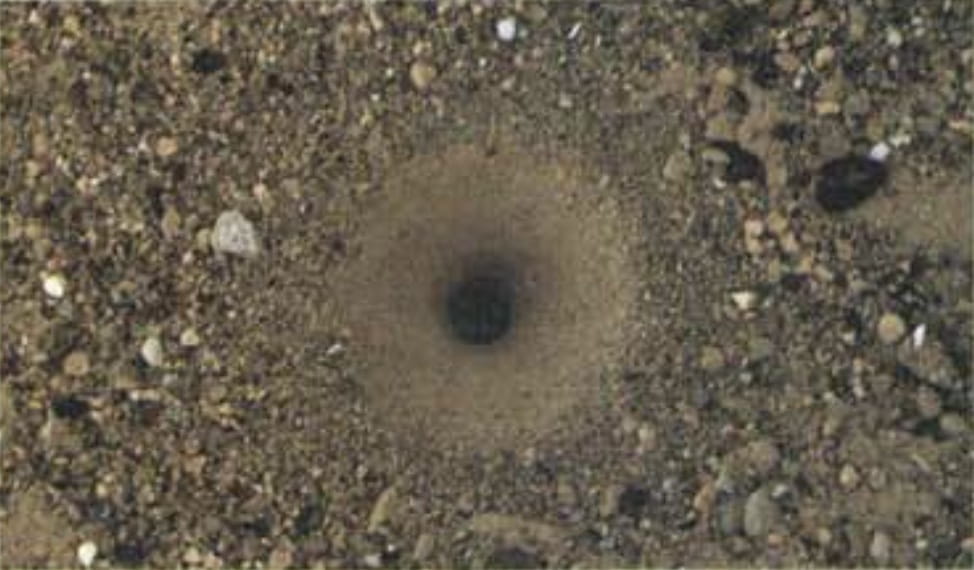
ant-lion pit
Ant-lions are particularly common in the dry zones of the world, and in their own modest way they are very successful. So successful, in fact, that it would have been strange if nature had allowed them to keep their hunting technique to themselves. And, as it happens, a small, obscure group of flies has developed the same technique, although the general shape of the fly larvae is very different. Probably the fly is also found in Arabia, though as yet there are no firm records.
The ant-lion's specialized and highly efficient life style is, of course, the result of evolution. The ant-lion, in fact, is a finely tuned result of a long evolutionary process that probably started with the largest of the Arabian species digging themselves into sand for protection while eating prey—and receiving an unexpected bonus. While digesting their previous prey, they would sometimes find additional victims accidentally stumbling into their pit. Since the pits provided food as well as protection, the ant-lions gradually developed the digging to the point where they no longer had to go hunting at all.
+++++++
Torben B. Larsen writes regularly for Aramco World on the entomology of the Arabian Peninsula.
You may also be interested in...
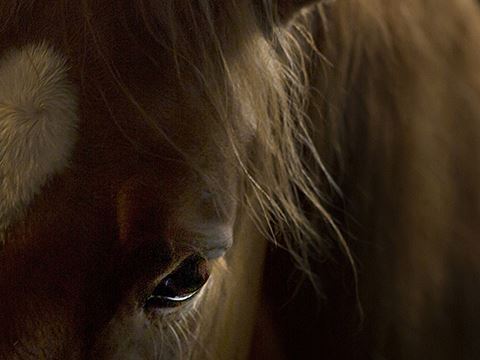
Karabakh Horse Rides Again: A Comeback for a Azerbaijan Treasure
Science & Nature
Strength, speed and a lustrous coat made the Karabakh horse a symbol of status, power and beauty in its native Azerbaijan, and beyond. Wars over the past century nearly eliminated them, but now breeders are steadily restoring their numbers.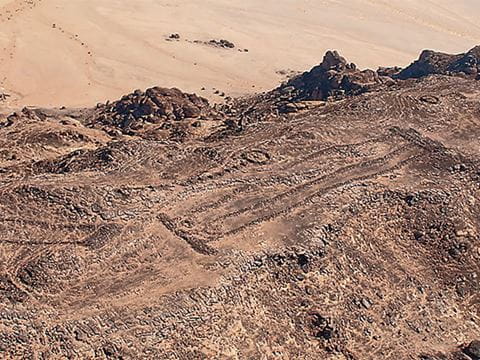
Saudi Arabia's Mustatils: Mysterious Monuments of the Desert
History
Science & Nature
In northwest Saudi Arabia, scattered across an area twice the size of Portugal, archeolog|sts and aerial surveyors have identified more than 1,000 roughly built, low, rectangular stone structures that date back 7,000 years to an era when today's deserts were savannas. These mustatils-"rectangle" in Arabic-have been long-known to regional tribes, and in 2018 archeologists began to investigate and excavate. Discoveries of animal bones and horns point toward ritual purposes. The great number of mustatils may be evidence of population and social organization. But why are there so many-and in so many different places? While no two are quite the same in length and width, all are close in height and shape. Amid more questions than clues, archeologists continue to dig.
Green Mosques Generate Positive Energy
Arts
Science & Nature
From Jordan and Morocco to Indonesia, the uk and more, communities and governments are supporting eco mosques. The goals: education and thrift. “We want to lead by example,” says the manager of Masjid Az-Zikra in Indonesia.